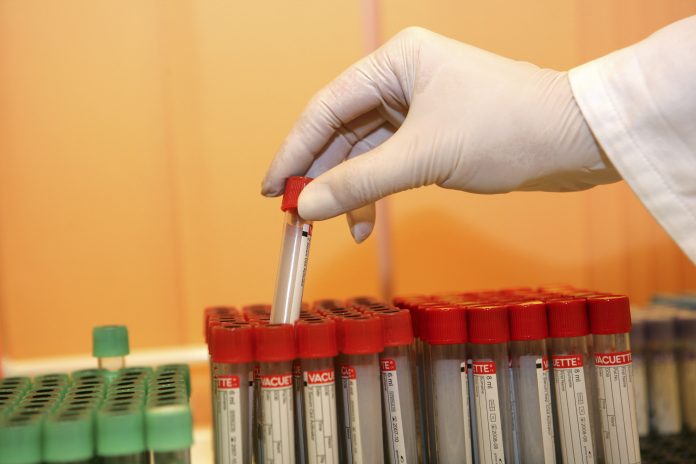The European Red Cell Society’s met the partners of the EU intellectual training network RELEVANCE at Mount of Truth in Ascona, Switzerland to discuss the latest progress
Getting together with old friends and colleagues, sharing one’s successes and problems, struggling for one’s point of view and celebrating the spirit of discovery and admiration for the unknown over a glass of wine or a cup of coffee; all this is worth sleepless nights and disappointments of routine research work.
This is the flavour of successful conferences, such as the meetings of the European Red Cell Society (ERCS) for the partners of the EU intellectual training network RELEVANCE. Conferences of this society provide a unique platform where the academic science interacts with clinical haematology, physics and engineering science. Together, the meeting participants address the hot topics in red cell research and the needs of patients. They unravel the fundamental molecular processes behind pathologies, suggesting new treatment strategies and developing novel diagnostic technologies.
This year, the ERCS members assembled at the Mount of Truth (Monte Verita) in Ascona, Switzerland. The meeting was organised by the coordinating house of the RELEVANCE project, University of Zurich, together with the Swiss Federal Institute of Technology (ETH) Zurich.
Since 1900, Monte Verita has been home to creative souls with alternative ways of thinking from all over the world. Starting as a utopic settlement of vegans and sun-worshipers, it then became a sanatorium and a meeting place for theosophists, reformers, anarchists, communists, social democrats, psycho-analysts, followed by literary personalities, writers, poets, artists and dancers. Finally, Monte Verita turned into a podium for researchers, such as ERCS community members.
The main focus of the meeting was personalised diagnostics and therapies for each unique patient. For this, precise diagnosis of the cause for the disease should be identified and best possible symptomatic therapy provided in case the genetic cause cannot be treated directly. When transfusion is required, blood for transfusion should perfectly match the patient’s group.
The achievements of RELEVANCE consortium partners presented in all of these areas were acknowledged by the colleagues from all over the world from the USA to New Zealand.
In her talk, Marieke von Lindern from the Sanquin Blood Bank in Amsterdam addressed multiple strategies that she and her colleagues pursue to achieve self-renewal of human erythroid cells, which give rise to new red blood cells in a bioreactor. The group developed a protocol of “growing patient’s own red blood cells” or red cells of “universal donor”. These cells, formed from immortalised “universal” stem cell lines, will lack most blood group-defining antigens and may be used to generate vast amounts of red blood cells as required for all patients. This is particularly important for blood transfusions as there is no risk of developing an immune reaction against the “foreign cell types” with “universal” stem cell lines.
Gaining knowledge on the structure and function of the red blood cell membrane is critical for the successful treatment of blood disorders caused by mutations in proteins building the cytoskeleton and ion-permeable channels. At the University of Pavia, the changes in cytoskeleton during maturation of young red blood cells, reticulocytes, to mature erythrocytes was explored by Giampaolo Minetti and his group.
According to his findings, selective sorting of proteins forming the cytoskeletal mesh and of the proteins anchoring it to the lipid bilayer requires the active participation of cholesterol rafts within the membrane. Once mature, the cytoskeleton forms a uniquely dynamic structure making red blood cells stable and highly deformable at the same time. It controls cell shape and volume and its rigidity, thus, controlling the red cell lifespan. Damage of the cytoskeletal integrity and stability occurs with cell ageing or can be caused by mutations resulting in the production of aberrant building blocks. All participants of the RELEVANCE consortium contributed to the investigation of the cytoskeletal structure and function.
Changes in cytoskeletal structure due to the mutations in the formation of proteins are the cause of multiple rare anaemias that may be recognised by the characteristic alteration in cell shape and increase in a variety of forms of red blood cells.
At the ERCS meeting, Asya Makhro from the University of Zurich presented specific algorithms which were developed to detect the mutated protein from the analysis of microscopic images of erythrocytes without the requirement for an expensive genetic test.
According to the presentation of Greta Simionato from the University of Saarland, images of diseased red blood cells may be used to assess severity sickle cell disease and for analysis of treatment success. Image analysis software for such tests is developed by the early stage researcher Ario Sadafi from Arivis AG and at the University of Saarland.
Due to a high degree of heterogeneity, it is essential to analyse stability of single red blood cells of patients with hereditary anaemias. Such an approach gives more information about the cause of disease, its severity and responsiveness of each individual patient to therapy.
At the meeting, Niamh Kilcawley from Epigem and Leonid Livshits from the University of Zurich presented the first results of a new device, the MeCheM analyser, testing membrane stability of individual red blood cells in flow in the clinical settings.
MeCheM analyser was used at the Emek Medical Centre in Afula, Israel, in monitoring a new therapy for sickle cell disease and for the screening of blood samples of patients with various other forms of rare anaemias.
Discovery of a mutation in ion channel PIEZO1 transporting calcium ions into red blood cells as a cause of xerocytosis a decade ago gave rise to a new class of rare anaemias, channelopathies. These diseases are difficult to diagnose and distinguish from hereditary spherocytosis, which is caused by mutations in structural elements of the cytoskeleton.
Misdiagnosis leads to choosing the wrong treatment strategy. Surgical removal of the spleen (splenectomy) helps to increase haemoglobin levels in patients with spherocytosis, but increases the risk of thrombosis in patients with xerocytosis.
The urgent need for new, simple and reliable diagnostic devices was addressed by a group of RELEVANCE partners (Nanion, Biological Station Roscoff, University Medical Centre Utrecht, Universities of Saarland and Zurich and Epigem). Together, they developed a battery of tests for identification of xerocytosis and Gardos channelopathy. The tests include gene array, detection of the abnormal function of ion channels in individual red blood cells using automated and classical electrophysiological methods, the resistance of diseased red blood cells to swelling and image analysis approach.
Used alone or in combination, these tests will allow precise diagnosis and monitoring of the efficacy of therapy for this group of patients. A number of meeting participants pointed out the sound contribution of the RELEVANCE consortium to the overall success of the 22nd ERCS meeting at the Mount of Truth.
One of the keynote speakers and a member of the jury for the young investigator awards, James Palis from Rochester University, shared his impression of the meeting with these words:
“I loved the enthusiasm of the young folks at the posters, which tells me that the meeting was a success and that future of the field in Europe is in good hands!”
Anna Bogdanova
Professor and Head of Red Blood
Cell Research Group
University of Zurich – Relevance project
Tel: +41 (0)44 635 8811
annab@access.uzh.ch
www.relevance.arivis.com/
*Please note: This is a commercial profile











